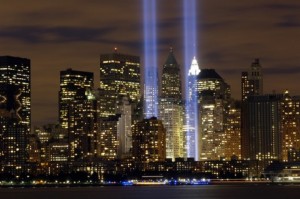The Times Educational Supplement, News, September 2011
Ten years after 9/11, Americans are taking stock. How does that day look now through the lens of time, the country is asking itself, how have we changed, how should we remember?
For America’s schoolteachers, a decade has done little to resolve another set of perplexing questions: how do we tackle those dreadful events in the classroom? How do we convey the significance without terrifying the children, often too young to remember? How much detail to spare them, how much to reveal?
This year, teachers in New Jersey will have an advantage. The state is recommending its public schools follow a new curriculum, developed to help teachers resolve those difficult dilemmas.
MaryEllen Salamone instigated the programme, which was developed by Families of September 11 with the New Jersey Commission on Holocaust Education and Liberty Science Centre. Ms Salamone’s husband, John, died on the 104th floor of the World Trade Centre. A mother of three, she grappled with how to tell her own children about that day. By the first anniversary, she realised teachers were floundering. “Some were doing nothing, some were scaring the bejeezus out of the kids,” she says.
And then she took her children to visit Northern Ireland. In the Parliament Buildings in Belfast they saw a memorial to victims of The Troubles. “One of my sons said, ‘Look Mom, Osama Bin Laden has been here, too.’ It was clear to me at that moment that terrorism was really misunderstood in America.”
Children were growing up equating it solely with Al Qaeda. “If kids don’t understand the concept of terrorism, they can never really understand what happened on September 11,” she says.
The curriculum takes a broad view of the history and causes of terrorism, with 9/11 as a case study along with other examples from history – Omagh, the Munich Olympics massacre, the Oklahoma bombing. Unfortunately the US press has insisted upon referring to it as the 9/11 Curriculum, the correct title is in fact Global Security, Terrorism and 9/11 in the Classroom.
September 11 falls right at the start of the autumn term, before teachers have got to know their new students and learnt whether any lost family members. As a result, teachers have tended to talk about the attacks around the anniversary and not return to them. By contrast, this curriculum peppers the subject throughout the school year and across disciplines.
Trauma specialist Donna Gaffney helped target the lesson plans to each age group. They start with simple narratives of courage and heroism, becoming progressively more analytical further up the school. The most distressing pictures, of burning towers and people jumping, are handled sensitively, and children are encouraged to respond by taking positive action in their own lives.
“We want them to have a global sense of this,” Ms Gaffney says. “To understand how the rest of the world experiences similar events. It’s not worse because it’s here. It’s not just about us. It’s not just an American phenomenon.”
In the ten years it’s taken for this curriculum to emerge, America has had time to reflect on the lessons it wants the next generation to take from that momentous day.
